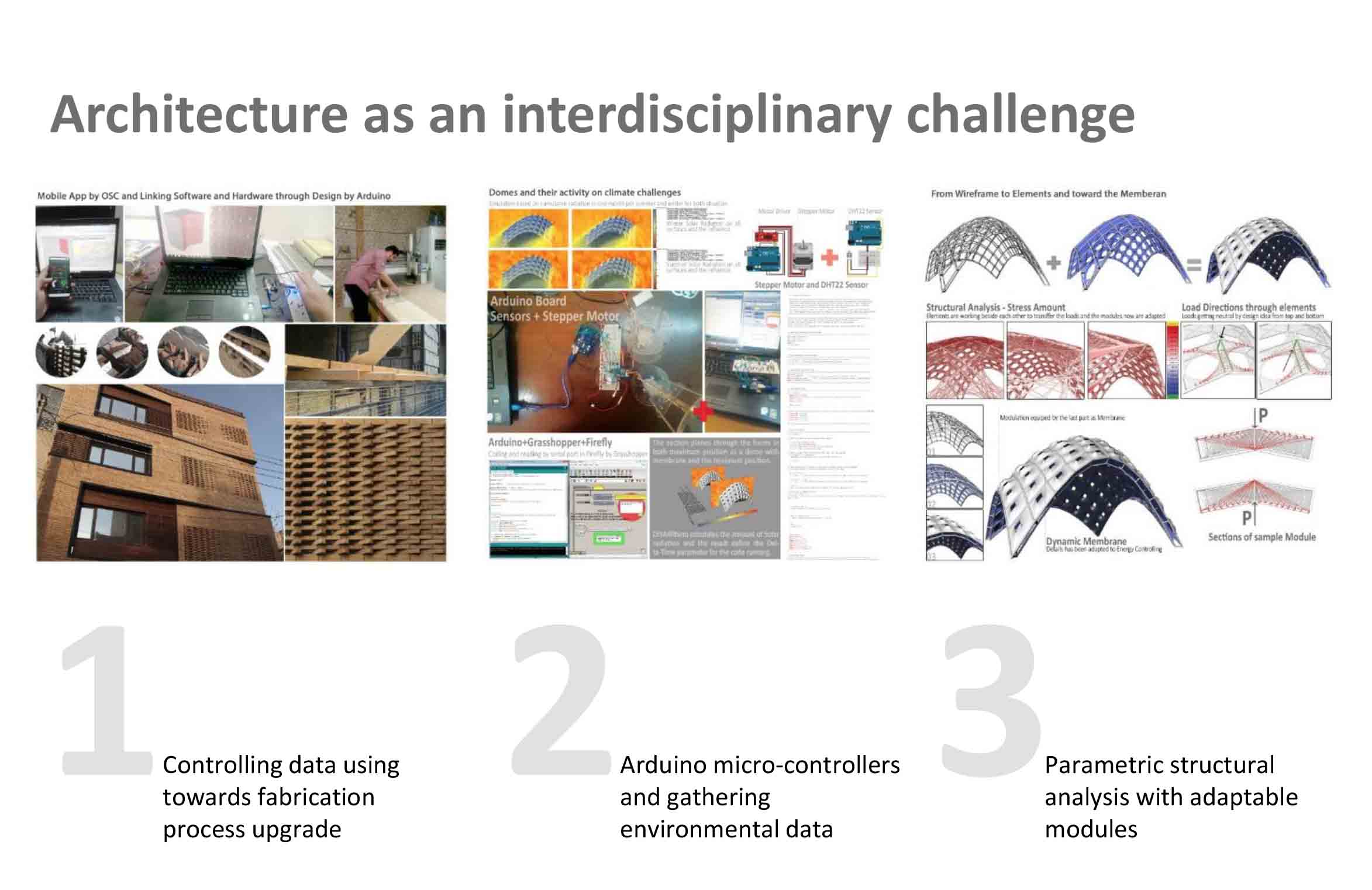
From Data to Info
Since we have accepted every element in architecture wants to be something (apprised by a quote from Luis Kahn), the functions set data in design and might get the result back in analysis and optimization for better decisions are important to be known. Designers have to know why they are using a set of data to have their designs act better. Technology these days can easily bring this feedback to us by using its amazing progressions to implement data and info as layers to have elements actions and reactions appraised against load cases and critical situations. Here are some examples of such advantageous design calibration.
According to Figure#1, we used mobile applications within gHowl add-on for grasshopper and TouchOSC Android app to handle bricks orientation to sun radiation in hot and dry climate conditions with intense solar exposure and have everything connected to know how these bricks should be displaced and adjusted well. The process established from design, analysis, and completed by the last part in using the bricks cutting sheets. We tried to have them all aligned from top to bottom in Z-Axis but rotated in X, Y-Axis adapted to sun radiation variation.
Figure#2 and #3 are presenting a modular design for integrating design, analysis, and responsibility to have sustainable conditions within the pavilion space dynamically by temperature and humidity. Both parameters were being calculated by the DHT-22 sensor and Arduino Uno was managing the commands to stepper motors as the system had to push the membrane up or pull it down while conditional overshadowing was controlling the thermal comfort. The explanatory detailed article about this post is Here!